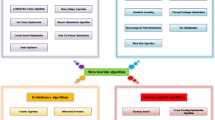Abstract
Energy optimization is one of the key problems for ship roll reduction systems in the last decade. According to the nonlinear characteristics of ship motion, the four degrees of freedom nonlinear model of Fin/Rudder roll stabilization can be established. This paper analyzes energy consumption caused by overcoming the resistance and the yaw, which is added to the fin/rudder roll stabilization system as new performance index. In order to achieve the purpose of the roll reduction, ship course keeping and energy optimization, the self-tuning PID controller based on the multi-objective genetic algorithm (MOGA) method is used to optimize performance index. In addition, random weight coefficient is adopted to build a multi-objective genetic algorithm optimization model. The objective function is improved so that the objective function can be normalized to a constant level. Simulation results showed that the control method based on MOGA, compared with the traditional control method, not only improves the efficiency of roll stabilization and yaw control precision, but also optimizes the energy of the system. The proposed methodology can get a better performance at different sea states.
Similar content being viewed by others
References
Crossland P (2003). The effect of roll stabilization controllers on warship operational performance. Control Engineering Practice, 11(4), 423–431. DOI: 10.1016/S0967-0661(01)00156-3
Fang MC, Lin YH, Wang BJ (2012). Applying the PD controller on the roll reduction and track keeping for the ship advancing in waves. Ocean Engineering, 54, 13–25. DOI: 10.1016/j.oceaneng.2012.07.006
Fang MC, Luo JH (2007). On the track keeping and roll reduction of the ship in random waves using different sliding mode controllers. Ocean Engineering, 34(3), 479–488. DOI: 10.1016/j.oceaneng.2006.03.004
HoKo C, Wang SF (2011). Precast production scheduling using multi-objective genetic algorithms. Expert Systems with Applications, 38(7), 8293–8302. DOI: 10.1016/j.eswa.2011.01.013
Holden C, Galeazzi R, Rodriguez C, Perez T, Fossen TI, Blanke M, de Almeida Santos Neves M (2007). Nonlinear container ship model for the study of parametric roll resonance. Modeling, Identification and Control, 28(4), 87–103. DOI: 10.4173/mic.2007.4.1
Huang S, Duan WY, You YG, Jiang JH, Wang WS (2014). Nonlinear time domain simulation of sloshing and coupled ship motion. Journal of Harbin Engineering University, 35(9), 1045–1052. (in Chinese) DOI: 10.3969/j.issn.1006-7043.201307076
Jin HZ, Wang F (2009). Rudder/Fin roll stabilization with energy optimization using a lower-speed steering gear. Acta Armamentarii, 30(7), 945–950. (in Chinese)
Jin HZ, Gao YN, Zhou SB (2011). Adaptive terminal-sliding- mode combination control for heading and rolling of marine robot based on energy optimization. Journal of Mechanical Engineering, 47(15), 37–43. (in Chinese)
Koshkouei AJ, Burnham K, Law Y (2007). A comparative study between sliding Mode and PID controllers for ship roll stabilization. IET (IEE) Control Theory Appl., 1(5), 1266–1275. DOI: 10.1049/iet-cta:20060277
Lee LH, Lee CU, Tan YP (2007). A multi-objective genetic algorithm for robust fight scheduling using simulation. European Journal of Operational Research, 177(3), 1948–1968. DOI: 10.1016/j.ejor.2005.12.014
Liang LH, Sheng XL, Zhang ST, Liu HW (2012). Optimize rudder’s parameters based on genetic algorithm. Techniques of Automation and Applications, 31(12), 11–15. (in Chinese)
Liu ZQ, Jin HZ (2013). Extended radiated energy method and its application to a ship roll stabilisation control system. Ocean Engineering, 72(1), 25–30. DOI: 10.1016/j.oceaneng.2013.06.009
Long Q (2014). A constraint handling technique for constrained multi-objective genetic algorithm. Swarm and Evolutionary Computation, 15, 66–79. DOI: 10.1016/j.swevo.2013.12.002
Malik A, Zhang ZM, Agarwal RK (2014). Extraction of battery parameters using a multi-objective genetic algorithm with a non-linear circuit model. Journal of Power Sources, 259, 76–86. DOI: 10.1016/j.jpowsour.2014.02.062
McGookin EW, Murray-Smith DJ, Li Y, Fossen TI (2000). Ship steering control system optimization using genetic algorithms. Control Engineering Practice, 8(4), 429–443. DOI: 10.1016/S0967-0661(99)00159-8
Minorsky N (1947). Experiment with activated tanks. Trans ASME, 96, 735–747.
Oda H, Ohtsu K, Hotta T (1996). Statistical analysis and design of a rudder roll stabilization system. Control Engineering Practice, 4(3), 351–358. DOI: 10.1016/0967-0661(96)00012-3
Pan I, Das S (2013). Frequency domain design of fractional order PID controller for AVR system using chaotic multi-objective optimization. International Journal of Electrical Power & Energy Systems, 51, 106–118. DOI: 10.1016/j.ijepes.2013.02.021
Perez T, Goodwin GC (2008). Constrained predictive control of ship fin stabilizers to prevent dynamic stall. Control Engineering Practice, 16(4), 482–494. DOI: 10.1016/j.conengprac.2006.02.016
Suksonghong K, Boonlong K, Goh KL (2014). Multi-objective genetic algorithms for solving portfolio optimization problems in the electricity market. International Journal of Electrical Power and Energy Systems, 58, 150–159. DOI: 10.1016/j.ijepes.2014.01.014
Treakle TW, Mook DT, Liapis SI, Nayfeh AH (2000). A time-domain method to evaluate the use of moving weight to reduce the roll motion of a ship. Ocean Engineering, 27(12), 1321–1343. DOI: 10.1016/S0029-8018(99)00051-7
Vicente H, Ayala H, Coelho LS (2012). Tuning of PID controller based on a multi-objective genetic algorithm applied to a robotic manipulator. Expert Systems with Applications, 39(10), 8968–8974. DOI: 10.1016/j.eswa.2012.02.027
Author information
Authors and Affiliations
Corresponding author
Additional information
Foundation item: Supported by the National Natural Science Foundation of China (Grant No. 61174047) and the Fundamental Research Funds for the Central Universities (HEUCF041406).
Rights and permissions
About this article
Cite this article
Yu, L., Liu, S., Liu, F. et al. Energy optimization of the fin/rudder roll stabilization system based on the multi-objective genetic algorithm (MOGA). J. Marine. Sci. Appl. 14, 202–207 (2015). https://doi.org/10.1007/s11804-015-1292-z
Received:
Accepted:
Published:
Issue Date:
DOI: https://doi.org/10.1007/s11804-015-1292-z




